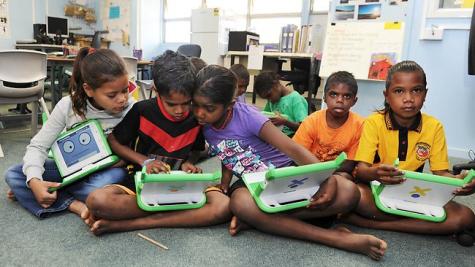There are a few fundamental services government should provide for the people. One of them is education.
The reason for this is acknowledged in the opening paragraph of the long awaited Gonski Report into education funding which was released by the Gillard Government today when he wrote:
“High quality schooling fosters the development of creative, informed and resilient citizens who are able to participate fully in a dynamic and globalised world. It also leads to many benefits for individuals and society, including high levels of employment and earnings, and better health, longevity, tolerance and social cohesion.”
In one of the most potentially seminal reports into education funding since the election of the Whitlam Government in 1972, David Gonski’s recommendations are “aspirational” and aimed at reversing the slippage in school performance in reading and mathematical literacy over the past decade compared with many of our international counterparts as well as the gap in educational outcomes for students of different socio-economic backgrounds.
The key recommendations revolve around distribution of Federal and state/territory government funding for education, including a recommendation for a $5 billion injection to bring funding levels to the level required to meet the Government’s commitment that no school be worse off because of the report’s recommendations, and to improve Australian student performance in national and international tests.
Central to the reforms proposed is the discrepancy in student outcomes between students from low socio-economic backgrounds and those who are better off, and the complex and non-transparent funding arrangements involving the two levels of government for education (Federal and state/territory). Despite a raft of measures and initiatives to address the issue of the gap in student outcomes over the past two decades or more, the gap is growing.
In 2009, 56% of students from low socio-economic backgrounds completed Year 12 compared with 75% of students from high socio-economic backgrounds. This education inequity is exacerbated by access to university where the transfer rate from school to university for students from high socio-economic backgrounds is double that of their counterparts from low socio-economic backgrounds.
The Gonski report proposes the establishment of a new schooling resource standard (SRS) which would be based on every student attracting the level of public funding necessary for each school to achieve “high educational outcomes” – which includes improved performance on international and national tests - over a sustained period. Additional funds would be provided for special educational needs particularly for students in areas of entrenched social disadvantage. For non-government schools, the public funding would be adjusted initially depending on the socio-economic status (SES) of the school and the capacity of that school community to make a co-contribution.
What this means is effectively the creation of a national funding pool comprising all the dollars provided by all levels of government. It is a common sense approach (which, in fact, has swirled around the Canberra bureaucracy as a ‘wish list’ solution for at least 20 years) based on the principles that governments:
- should support all students to a given level of funding
- supplement schools in greatest need, and
- make adjustments in school communities where parents have the capacity to make a co-contribution, that is, pay fees.
However, despite an 18 month investment from Gonski – an eminent businessman and philanthropist - and other panel members assisting him, that entailed 7,000 written submissions and visits to 110 schools or education groups, the Gillard Government has taken a cautious approach.
Education Minister, Peter Garrett, made it clear that returning the Federal Budget to surplus is the highest priority of the Government. He also announced that the Government’s response to the report is to undertake further consultation with “education stakeholders”. A series of Commonwealth-State working groups will also be established to discuss some of the nitty-gritty further.
On this basis, it is highly unlikely that the recommendations will be implemented from 2014 as proposed or that the $5 billion extra that is required to bring the school system up-to-speed will be available – and the best we can hope for is that Gonski's recommendations make it into election platforms in 2013.
In the meantime, the opportunity for all of our children to have the best chance in life will just have to wait a little longer.
Further information
- Read the entire Gonski Report and related reports and research here: http://www.schoolfunding.gov.au








 Agree (0)
Agree (0) Disagree (
Disagree (







__small.png)










